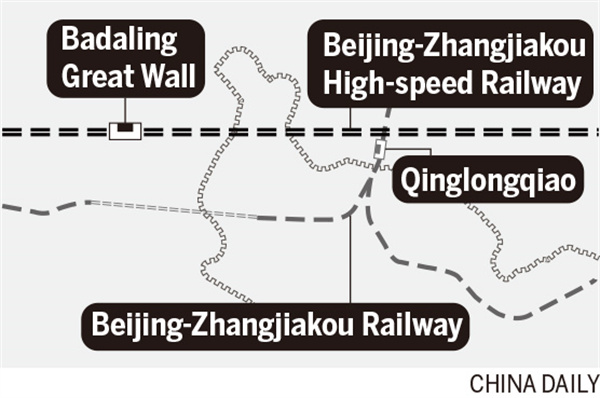

From old to new
A century ago, when trains arrived at Qinglongqiao, the operator got down from the cabin, walked to the end of the train, hopped back on and drove the train from the other end. Qinglongqiao lies at the end of a zigzag section of the line, which Zhan designed to deal with the steep gradient.
"With the limited budget and technology, it was the best choice at the time, showing Zhan Gong's wisdom," Yang said.
Other countries were skeptical, doubting the line could be completed only by Chinese because the country was weak. Its successful construction boosted national morale.
These days, even much more difficult issues wouldn't be a problem. China has the largest high-speed railway network in the world, stretching more than 40,000 km, and it crosses deserts and humid coastal areas.
Three years ago, a hundred years after the opening of the Beijing-Zhangjiakou line, a high-speed railway opened between the two cities. It was the main line of transport during the 2022 Beijing Winter Olympics.
According to the China State Railway Group, the company that oversees all of the country's railway projects, the 174-km Beijing-Zhangjiakou High-Speed Railway, which can reach speeds of 350 km per hour, is China's first "intelligent" high-speed line, and leads the world in railway technology. The lines, old and new, are witnesses to the development of the railway network and the improvement in the country's capabilities.
Yang remembers young engineers surveying the station during the construction of the new high-speed line, but during the three years that it took, Qinglongqiao continued to operate as usual.
The new high-speed line's Badaling Tunnel now lies under Qinglongqiao.
"A bullet train can pass 3.8 meters beneath me and I don't feel the vibrations," Yang said, pointing to where the old and new line cross. For him, this is proof of China's skill at building railways.